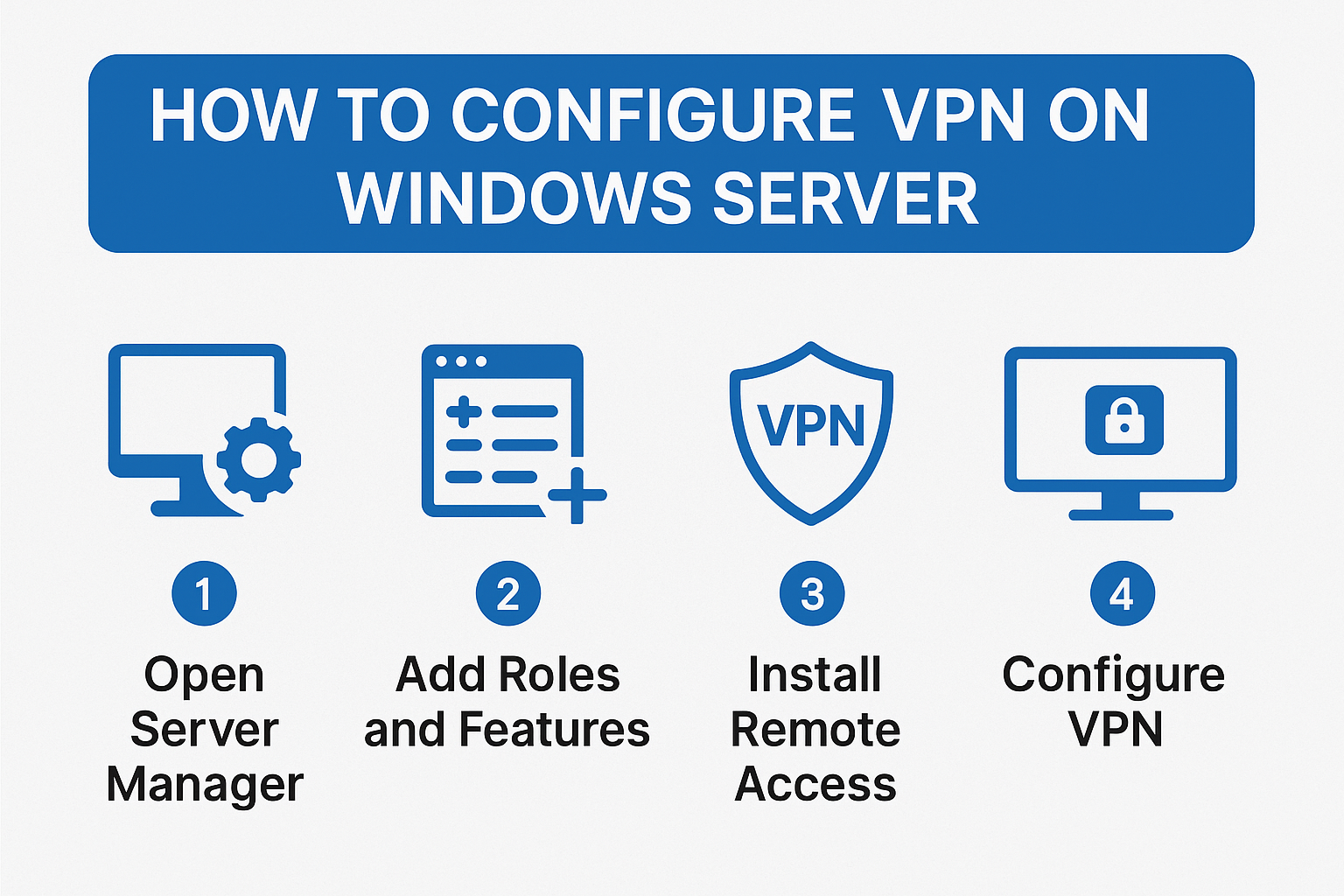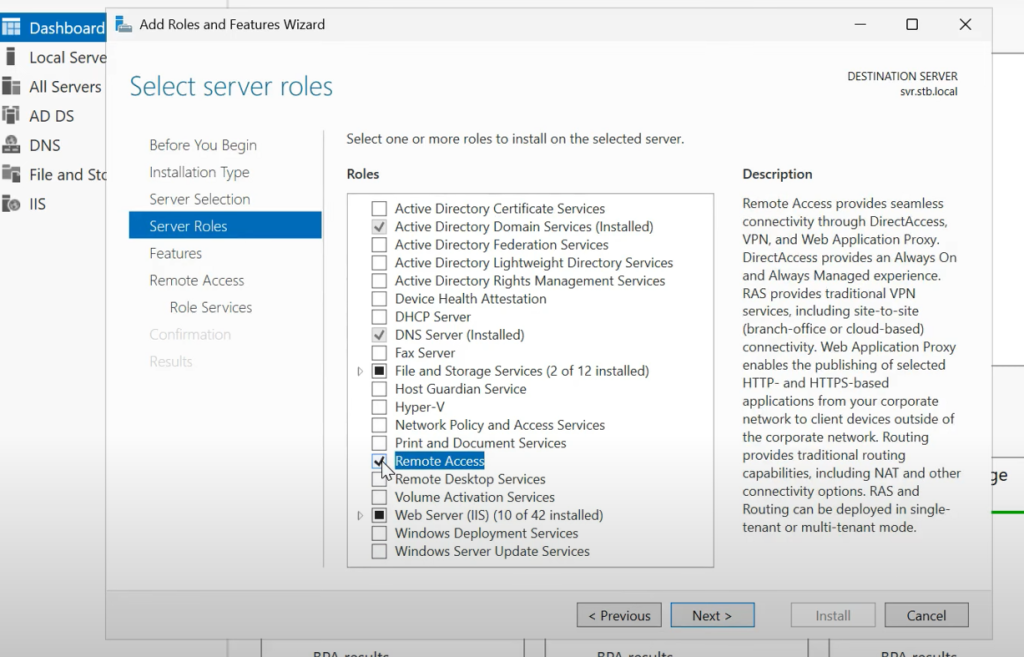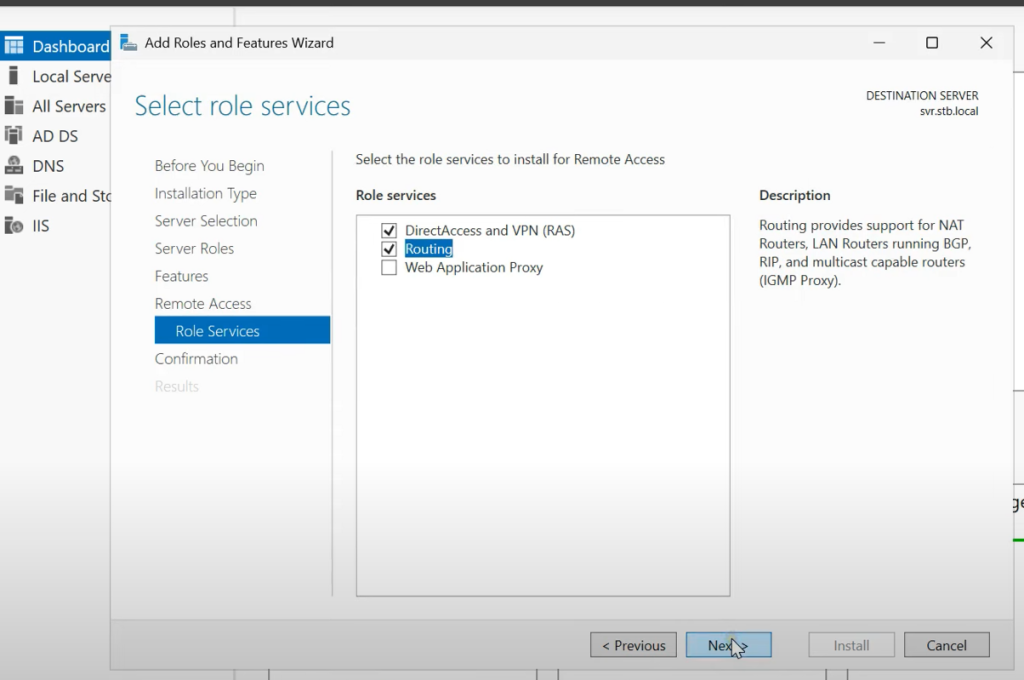
Setting up a Virtual Private Network (VPN) on a Windows Server is one of the most effective ways to securely connect remote users or branch offices to your organization’s network. VPNs help encrypt traffic and protect data integrity over the internet, making them essential for modern businesses.
This guide will walk you through how to configure a VPN on Windows Server (2019/2022) using the Routing and Remote Access Service (RRAS).
🔧 Step 1: Install the Remote Access Role
- Open Server Manager.
- Click on Manage → Add Roles and Features.
- Proceed through the wizard until you reach Server Roles.
- Select Remote Access → Click Next.


- Under Role Services, select DirectAccess and VPN (RAS).
- Continue through the wizard and click Install.
Once the installation is complete, restart the server if prompted.
⚙️ Step 2: Configure RRAS for VPN Access
- Open Server Manager → Tools → Routing and Remote Access.
- Right-click your server name and select Configure and Enable Routing and Remote Access.
- The Setup Wizard will open — choose Custom Configuration.
- Select VPN access → Click Next, then Finish.
- When prompted, click Start service to activate RRAS.
🔑 Step 3: Configure Network and User Permissions
- Open Network and Sharing Center → Change adapter settings.
- Identify your public network interface (internet-facing) and private interface (LAN).
- In RRAS, right-click your server → Properties → IPv4 tab.
- Choose Static address pool and define an IP range for VPN clients.
- Allow VPN access for specific users:
- Open Active Directory Users and Computers.
- Right-click a user → Properties → Dial-in tab → Enable Allow access.
🔒 Step 4: Configure Firewall and Ports
Ensure the following ports are open on your firewall or router:
- TCP 1723 (for PPTP VPN)
- UDP 500 and UDP 4500 (for L2TP/IPsec)
- Protocol 47 (GRE) for PPTP
🌍 Step 5: Test the VPN Connection
- From a client machine, go to Settings → Network & Internet → VPN → Add a VPN connection.
- Choose Windows (built-in) as the provider.
- Enter your server’s public IP address or domain name.
- Input the username and password of an allowed account.
- Connect — if configured properly, the connection should establish securely.
✅ Best Practices
- Use L2TP/IPsec or SSTP for better encryption security.
- Apply Network Policy Server (NPS) for advanced authentication.
- Regularly update Windows Server and enforce strong password policies.
- Monitor VPN activity using the RRAS logs and Event Viewer.
How to Configure VPN on Windows Server (F.A.Q)
What Windows Server editions support VPN?
VPN can be configured on Windows Server 2012, 2016, 2019, and 2022 using RRAS.
Which VPN protocol is most secure on Windows Server?
L2TP/IPsec or SSTP offers stronger encryption and better firewall compatibility than PPTP.
Can I use a dynamic IP for my VPN server?
Yes, by using a Dynamic DNS (DDNS) service to map your changing IP to a domain name.
How many VPN clients can connect simultaneously?
It depends on your hardware and Windows Server license. For most small setups, 250+ concurrent connections are possible.





